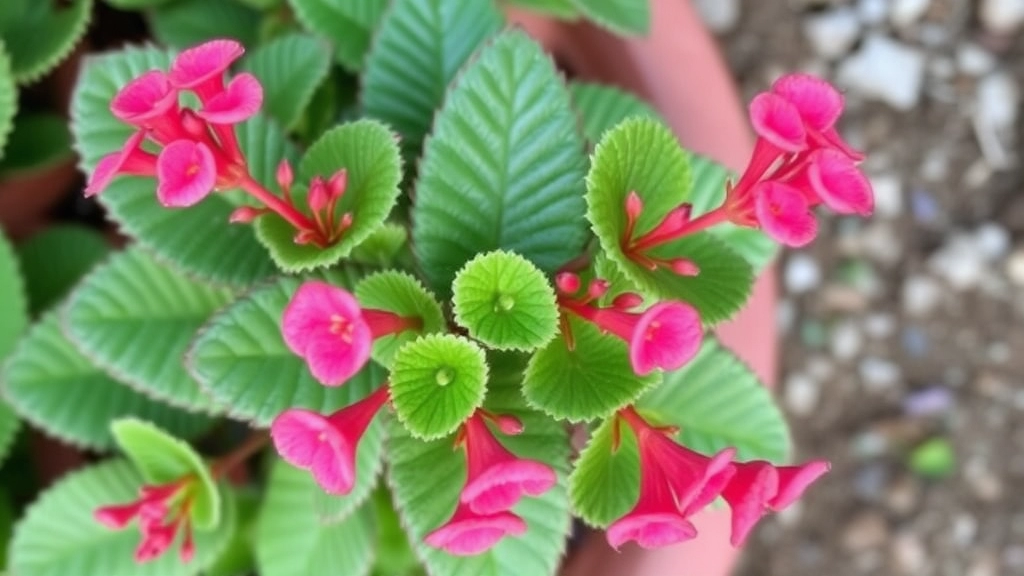Kalanchoe Toxicity: What You Need to Know
Are you wondering if Kalanchoe is poisonous to humans? You’re not alone. Many people are concerned about the safety of having this popular houseplant around, especially in homes with children and pets. Kalanchoe contains toxic compounds that can be harmful if ingested, leading to serious health issues. Understanding these risks is crucial to keep your household safe.
In this article, we’ll dive into the specific toxins found in Kalanchoe, the symptoms of poisoning, and what to do if someone accidentally ingests part of the plant. We’ll also cover how to handle Kalanchoe safely and explore whether it’s more dangerous for pets than humans. Stay informed and keep your family safe by learning all you need to know about Kalanchoe’s toxicity.
Toxic Compounds Found in Kalanchoe
When considering the safety of household plants, Kalanchoe often raises concerns due to its toxic properties.
Kalanchoe contains several toxic compounds that can pose serious health risks. The primary culprits are cardiac glycosides, which can disrupt heart function. These compounds are particularly potent and can lead to severe symptoms if ingested.
Key Toxic Compounds in Kalanchoe:
- Cardiac Glycosides: These compounds can affect heart rhythms, potentially leading to arrhythmias or other cardiac issues.
- Bufadienolides: Another group of toxic substances that can also impact heart function and overall health.
- Saponins: While less toxic than the above compounds, they can still cause gastrointestinal distress.
It’s crucial to understand that the toxicity of Kalanchoe is not uniform across all its parts. Different parts of the plant contain varying concentrations of these toxic compounds, which can influence the severity of poisoning. If you have pets, it’s important to be aware of Kalanchoe’s toxicity to dogs and the necessary treatments.
For those interested in the medicinal uses of Kalanchoe despite its toxic properties, you might want to explore the health benefits and medicinal uses of Kalanchoe delagoensis.
Effects of Kalanchoe Poisoning in Humans
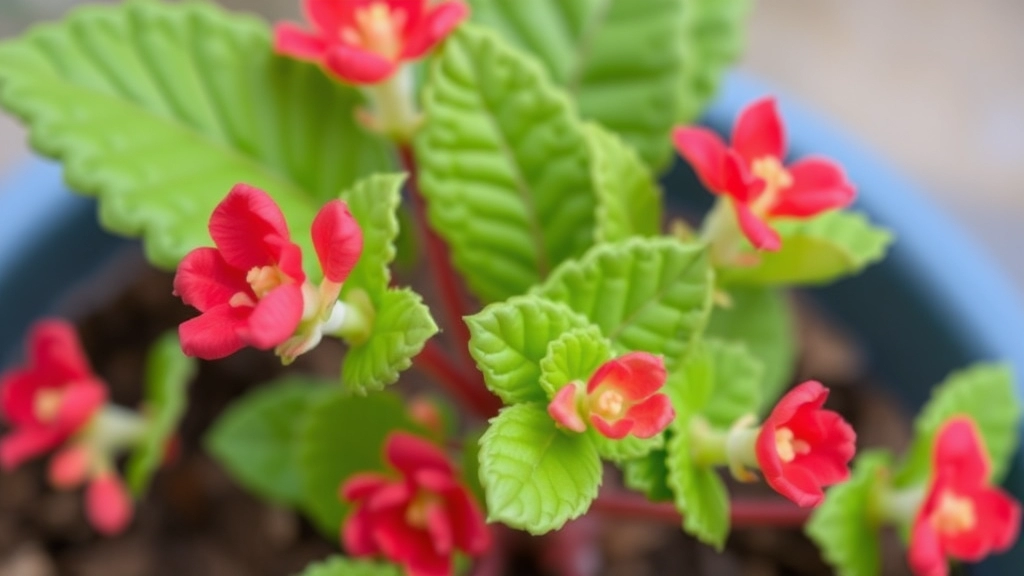
So, you’ve got a Kalanchoe plant at home. It’s pretty, but did you know it can be toxic? If you or someone you know accidentally ingests parts of this plant, it can lead to some serious health issues. Let’s dive into what you might experience if poisoning occurs.
What Happens When You Ingest Kalanchoe?
When humans consume Kalanchoe, the effects can vary depending on the amount eaten and which part of the plant is involved. Here’s what you might face:
- Gastrointestinal Distress: This is often the first sign. You could experience nausea, vomiting, and diarrhoea. Not pleasant, right?
- Heart Issues: Kalanchoe contains compounds that can affect your heart rate. You might feel palpitations or even arrhythmias. It’s like your heart’s trying to dance to a tune it doesn’t know.
- Neurological Symptoms: Some people report dizziness or confusion. It’s like your brain’s taken a detour and doesn’t know how to get back on track.
- Skin Reactions: Although less common, some may experience rashes or irritation upon contact with the sap. It’s nature’s way of saying, “Hey, back off!”
Why Should You Care?
These effects can escalate quickly, especially in sensitive individuals or those with pre-existing conditions.
If you think about it, it’s not just about you. If you have kids or pets around, the stakes are even higher.
How to Recognize Symptoms of Poisoning
When dealing with Kalanchoe, it’s crucial to be aware of the symptoms of poisoning, especially since these plants can pose health risks to both humans and pets.
Key Symptoms of Kalanchoe Poisoning
Recognizing the signs of Kalanchoe poisoning can be life-saving. Here’s what to look out for:
- Gastrointestinal Distress: Nausea, vomiting, and diarrhoea are common early indicators.
- Cardiovascular Issues: Irregular heartbeats or increased heart rate can occur, which may lead to more severe complications.
- Respiratory Problems: Difficulty breathing or shortness of breath may arise in more serious cases.
- Neurological Symptoms: Dizziness, confusion, or seizures are critical signs that require immediate attention.
- Skin Reactions: Rashes or irritation can also manifest, especially after contact with the plant.
Severity and Timing
Symptoms can vary in severity based on the amount ingested and the individual’s sensitivity.
- Mild Symptoms: May appear within a few hours and can often resolve with minimal intervention.
- Severe Symptoms: These can develop rapidly and may require urgent medical care.
It’s vital to monitor for these symptoms closely, especially if you suspect ingestion has occurred. For more information on whether Kalanchoe plants are poisonous to pets and humans and how to protect your pets, visit our detailed guide. Additionally, understanding the toxicity of Kalanchoe Tomentosa can help ensure the safety of your household.
Severity of Toxicity Based on Plant Parts
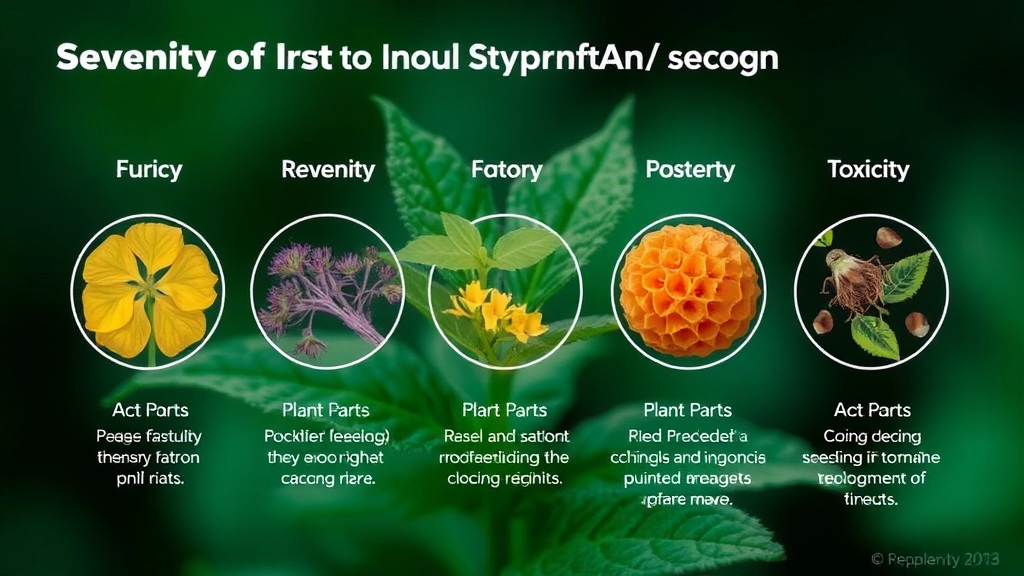
When it comes to Kalanchoe, not all parts of the plant are created equal in terms of toxicity. This is a concern for many, especially those with children or pets. Understanding which parts of Kalanchoe are more toxic can help mitigate the risks associated with accidental ingestion.
Key Toxic Parts of Kalanchoe:
- Leaves:
- The leaves of Kalanchoe contain the highest concentration of toxic compounds.
- Symptoms may arise even from a small amount being ingested.
- Flowers:
- While less toxic than the leaves, the flowers can still pose a risk if consumed in significant quantities.
- Stems:
- The stems contain some toxic elements, but they are generally less harmful compared to the leaves and flowers.
Factors Influencing Toxicity:
- Age of the Plant:
- Younger plants may have different concentrations of toxins compared to mature ones.
- Plant Variety:
- There are several species of Kalanchoe, and toxicity levels can vary. For example, Kalanchoe daigremontiana is known to be particularly toxic.
- Health of the Plant:
- Stressed or unhealthy plants may produce higher levels of toxic compounds as a defence mechanism.
Immediate Steps if Poisoning Occurs
If you suspect poisoning from Kalanchoe, immediate action is crucial. The symptoms can escalate quickly, and knowing what to do can make all the difference.
Medical Treatment Options for Kalanchoe Poisoning
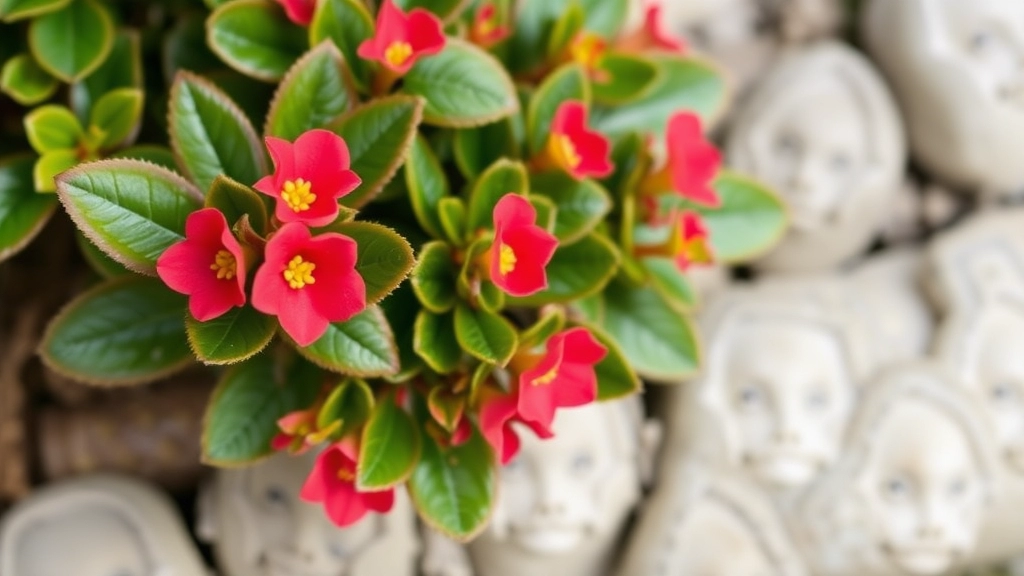
So, you or someone you know has ingested Kalanchoe. What now? The situation can feel pretty overwhelming, but knowing the right medical treatment options can make a world of difference.
Immediate Actions to Take:
- Stay Calm: First things first, panicking won’t help anyone. Take a deep breath.
- Call for Help: Reach out to a healthcare professional or poison control. They’re trained to handle these situations and can guide you on the next steps.
- Don’t Induce Vomiting: Unless a medical professional advises you to, avoid making the person vomit. It could do more harm than good.
Medical Treatments You Might Encounter:
- Activated Charcoal: If the ingestion was recent, doctors might administer activated charcoal. This helps absorb the toxins in the stomach.
- Supportive Care: Often, treatment focuses on managing symptoms. This could mean IV fluids for dehydration or medications to control nausea.
- Monitoring: In more severe cases, patients may need to be monitored in a hospital setting. This ensures any complications can be addressed promptly.
- Symptomatic Treatment: If specific symptoms arise, like heart issues or breathing difficulties, targeted treatments will be provided.
What to Expect at the Hospital:
- History Taking: Medical staff will ask about the amount ingested and when it happened. Be as detailed as possible.
- Tests: Blood tests or imaging may be done to assess the situation.
- Observation: Depending on the severity, a stay for observation might be necessary.
Preventing Accidental Ingestion
Accidental ingestion of Kalanchoe can be a real concern, especially for households with children and pets. Understanding how to prevent such incidents is crucial for ensuring safety.
Key Prevention Strategies
- Placement Matters: Keep Kalanchoe plants out of reach. Position them on high shelves or in rooms that are off-limits to children and pets.
- Educate Your Family: Talk to your family members about the dangers of Kalanchoe. Make sure everyone knows not to touch or eat the plant.
- Labeling: Use clear labels on pots, indicating that Kalanchoe is toxic. This can serve as a visual reminder to avoid contact.
- Alternative Plants: Consider replacing Kalanchoe with non-toxic houseplants. This reduces the risk of accidental ingestion altogether.
- Regular Checks: Routinely inspect your home for any fallen leaves or plant debris. Remove any remnants immediately to eliminate hazards.
By implementing these strategies, you can create a safer environment for everyone in your home. For more detailed information, check out our guide on Kalanchoe toxicity and safety tips. Additionally, if you are concerned about pets, read our article on Kalanchoe poisoning in dogs for more insights.
Handling Kalanchoe Plants Safely
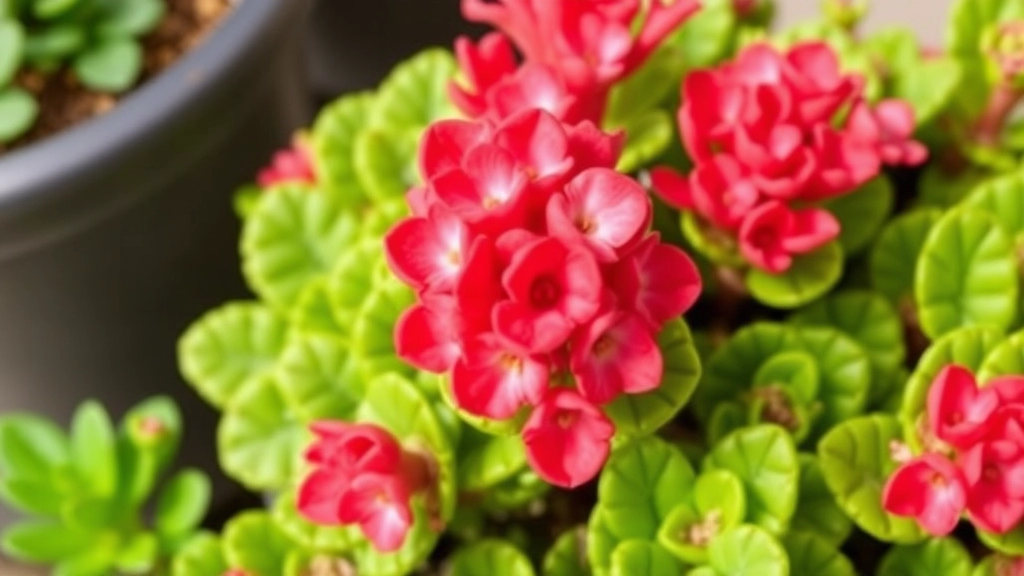
So, you’ve got a Kalanchoe in your home, and you’re loving its vibrant blooms. But let’s be real: handling these beauties safely is key to keeping your space toxin-free.
Here are some practical tips to keep in mind:
- Wear Gloves: When pruning or repotting, always wear gloves. This simple step can prevent skin irritation and accidental ingestion of sap.
- Keep Out of Reach: If you’ve got kids or pets, make sure your Kalanchoe is placed high up or in a spot they can’t easily access. Out of sight, out of mind, right?
- Limit Contact: Try to avoid touching your face after handling the plant. Wash your hands thoroughly afterwards to keep any toxins at bay.
- Educate Everyone: Make sure everyone in your household knows that Kalanchoe isn’t a snack. A little awareness can go a long way.
- Use Plant Barriers: If you’re worried about curious pets or little ones, consider using barriers like decorative plant stands or hanging planters.
- Monitor for Damage: Keep an eye on your Kalanchoe. If the leaves start to look chewed or damaged, it might be time to move it somewhere safer.
By following these simple handling tips, you can enjoy your Kalanchoe without the worry of accidental poisoning.
Is Kalanchoe More Dangerous for Pets Than Humans?
As we explore the potential dangers of Kalanchoe, it’s important to consider how these toxic compounds affect our furry friends compared to humans.
Pet Sensitivity to Kalanchoe Toxicity
When it comes to Kalanchoe, petsâespecially cats and dogsâare often more vulnerable than humans.
- Higher Toxicity Levels: Pets can experience severe reactions even from small amounts of the plant.
- Common Symptoms: Vomiting, diarrhoea, and lethargy are frequent signs of Kalanchoe poisoning in pets.
- Risk of Serious Complications: In severe cases, pets may face heart issues or even death.
Human vs. Pet Reactions
While humans can suffer from nausea and gastrointestinal distress, the outcomes are generally less severe.
- Dosage Matters: A larger body weight can mean a higher tolerance in humans compared to smaller pets.
- Immediate Response: Pets often cannot communicate their discomfort until it’s too late, making it crucial for pet owners to stay vigilant.
Understanding these differences is essential for pet owners. For more detailed information on how to care for your Kalanchoe plants, check out our ultimate guide to Kalanchoe care. Additionally, if you’re interested in exploring various species for your garden, don’t miss our guide on different Kalanchoe species.
Pet-Friendly Alternatives to Kalanchoe
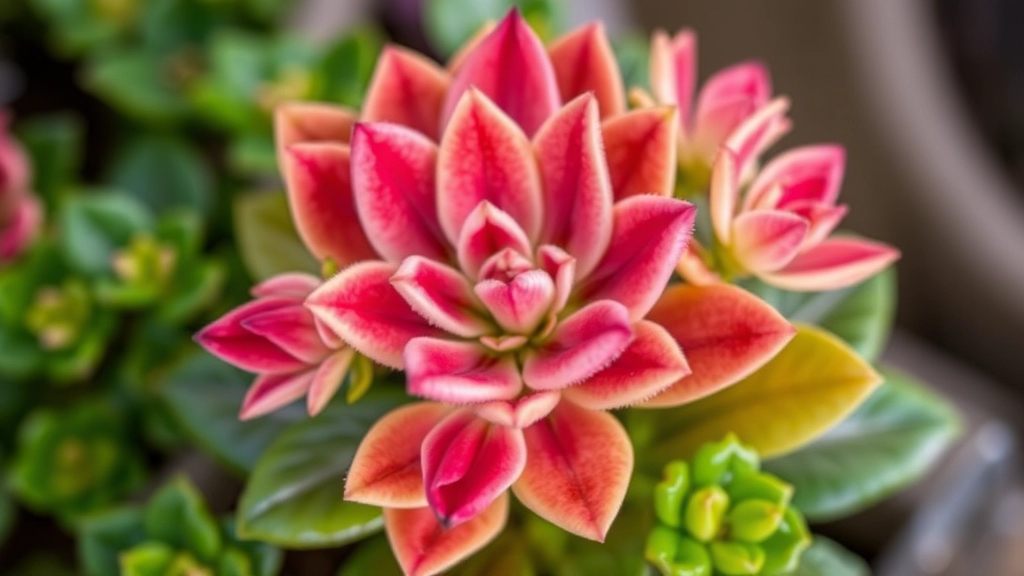
So, you love plants but worry about your furry friends getting into trouble? You’re not alone! Many plant lovers face the same dilemma when it comes to choosing greenery that’s safe for pets.
Safe Plant Choices
Here are some fantastic alternatives to Kalanchoe that won’t put your pets at risk:
- Spider Plant: Super easy to care for and safe for cats and dogs. Plus, they help purify the air!
- Boston Fern: A lush choice that adds a pop of green. It’s also non-toxic to pets.
- Areca Palm: This beauty is not just pet-friendly; it also thrives in low light and adds a tropical vibe to your space.
- Bamboo Palm: Another air-purifying plant that’s safe for your furry companions.
- Calathea: Known for its stunning leaves, this plant is non-toxic and perfect for indoor spaces.
- African Violet: A charming flowering plant that’s safe for pets and adds a splash of colour.
These options not only keep your pets safe but also bring a refreshing vibe to your home.
Why Choose Pet-Friendly Plants?
Choosing pet-friendly plants can ease your mind. You won’t have to constantly worry about your pets nibbling on leaves or getting sick. Plus, these plants can still provide all the beauty and benefits you crave without the risk.
Common Mistakes That Lead to Poisoning
When it comes to Kalanchoe, many of us may not realise the potential dangers lurking in our homes.
Here are some common mistakes that can lead to poisoning:
FAQs on Kalanchoe Poisoning in Humans
Is Kalanchoe poisonous to humans?
Yes, Kalanchoe can be toxic to humans if ingested. It contains compounds that can cause serious health issues.
What symptoms might I experience if I ingest Kalanchoe?
Ingesting Kalanchoe can lead to gastrointestinal distress (nausea, vomiting, diarrhoea), heart issues (palpitations, arrhythmias), neurological symptoms (dizziness, confusion), and skin reactions (rashes, irritation).
Which parts of the Kalanchoe plant are most toxic?
The leaves are the most toxic part of the Kalanchoe plant, followed by the flowers and stems. Even small amounts can cause symptoms.
What factors influence the toxicity of Kalanchoe?
The toxicity can vary based on the age of the plant, the variety of Kalanchoe, and the health of the plant. For example, Kalanchoe daigremontiana is particularly toxic.
What should I do if someone ingests Kalanchoe?
Stay calm and call a healthcare professional or poison control immediately. Avoid inducing vomiting unless instructed by a medical professional.
What medical treatments are available for Kalanchoe poisoning?
Treatments may include activated charcoal to absorb toxins, supportive care like IV fluids, monitoring in a hospital setting, and symptomatic treatment for specific issues like heart problems.
How can I safely handle Kalanchoe plants?
Wear gloves when handling the plant, keep it out of reach of children and pets, wash your hands after contact, and educate household members about its toxicity.
Are there pet-friendly alternatives to Kalanchoe?
Yes, there are many pet-friendly plants such as Spider Plant, Boston Fern, Areca Palm, Bamboo Palm, Calathea, and African Violet that are safe for pets and still bring beauty to your home.
Why should I choose pet-friendly plants?
Pet-friendly plants eliminate the risk of your pets getting sick from nibbling on toxic foliage, allowing you to enjoy the benefits of indoor greenery without worry.
References
-
Kalanchoe – Poison Control
-
Kalanchoe – Pet Poison Helpline
-
Kalanchoe – ASPCA
